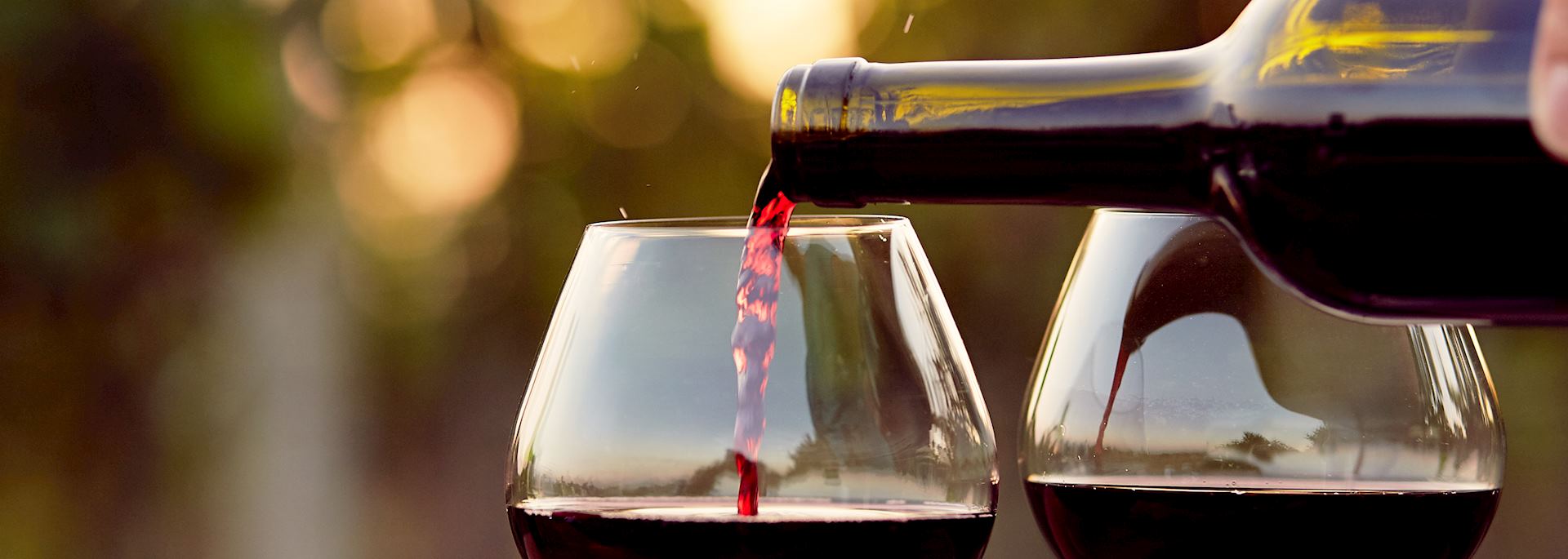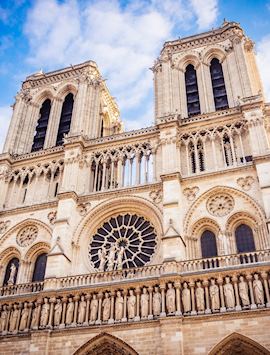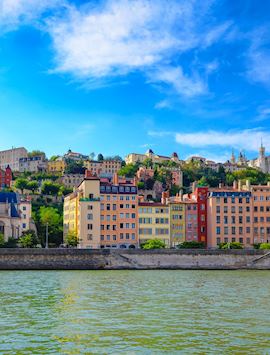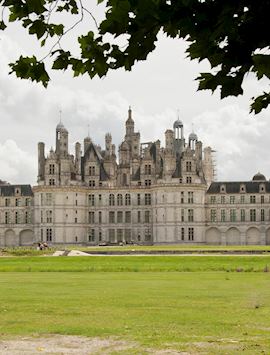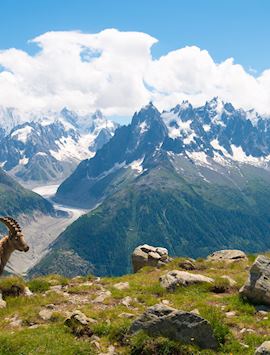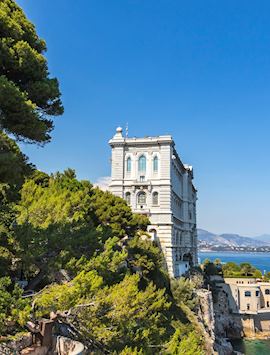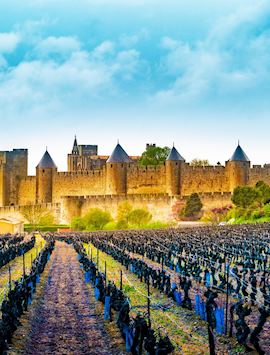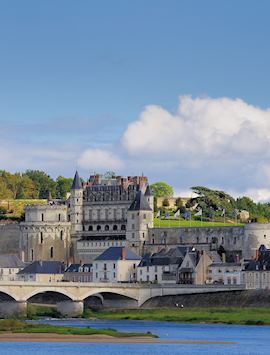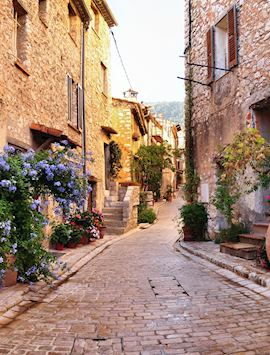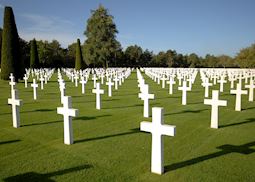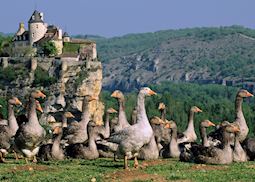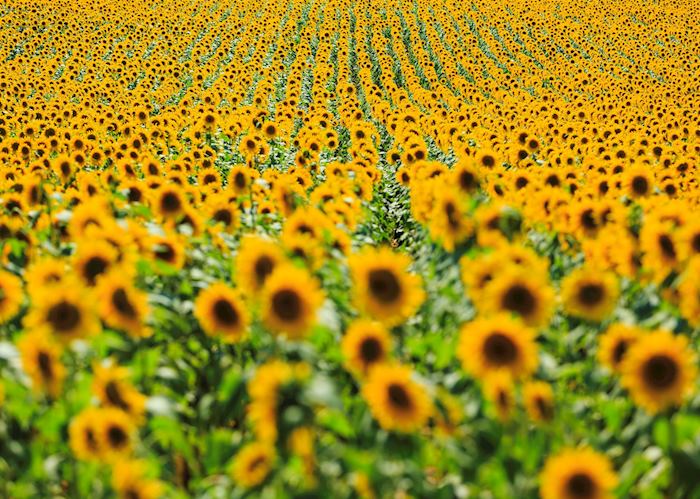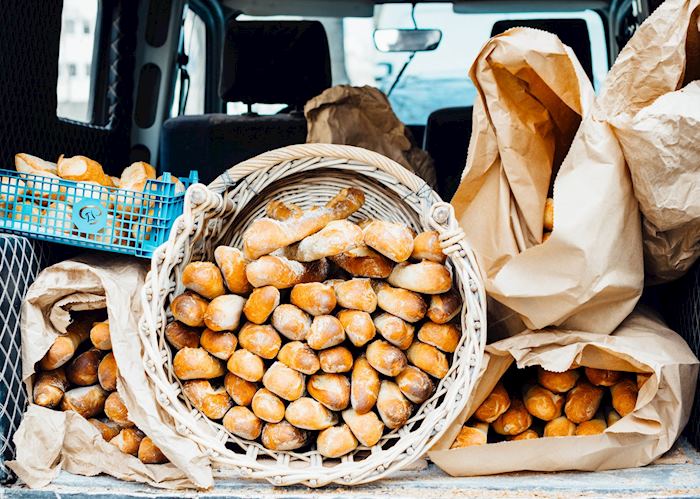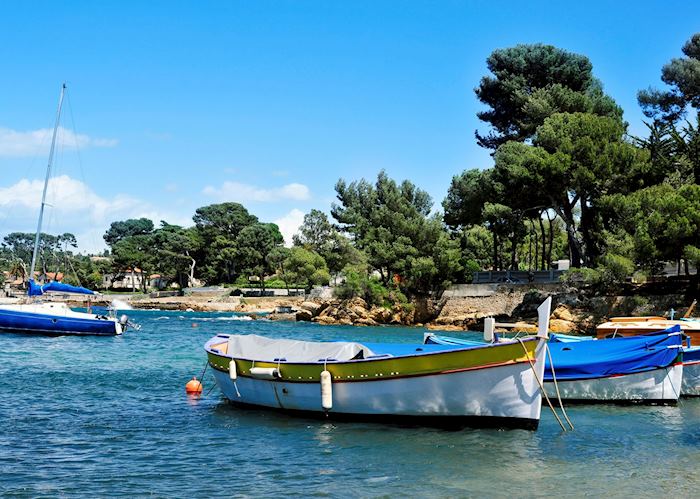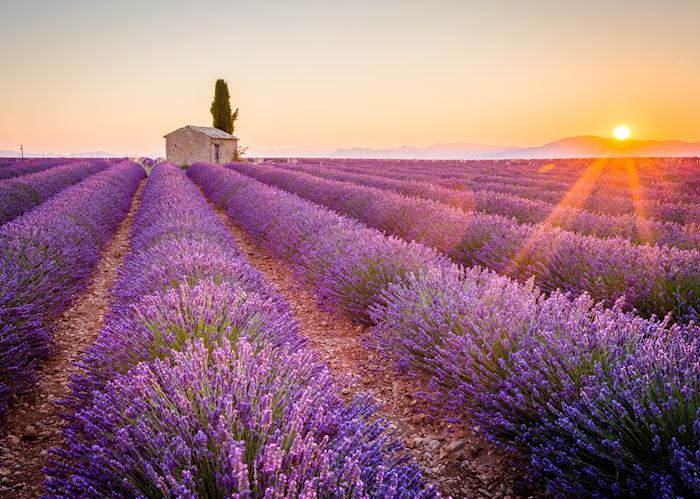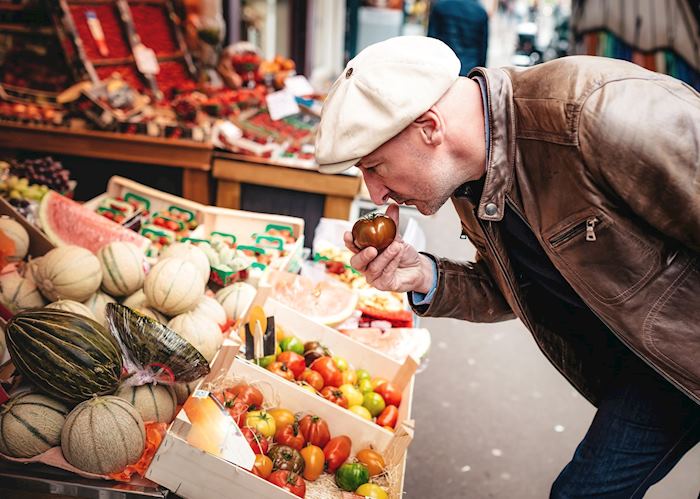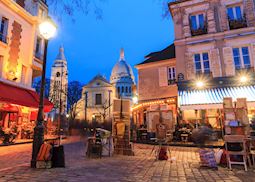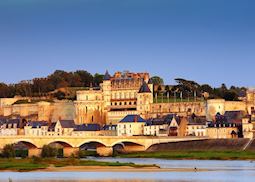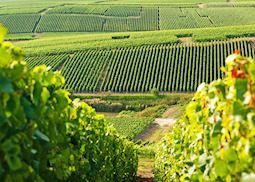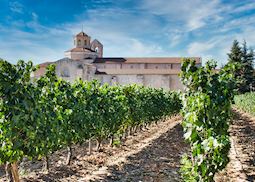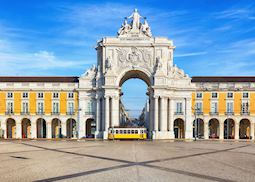
The birthplace of Versailles and Sun King Louis XIV's grand ambitions, and the cradle of radical creative movements from Impressionism to New Wave cinema: France has long been a game changer. Our specialists can show you how to explore the country that has turned the good life into an art form. And they’d argue that, even today, no other capital offers quite the same architectural homage to beauty, and patina of romance, as Paris.
Our specialists can craft a vacation to France that takes in its landscapes, from the mountains of the Rhône-Alpes to Provence’s lavender fields and the Riviera’s Mediterranean. They’ll also include the country’s historic sites, like the chateaux that stud the Loire Valley and the D-Day landing beaches in Normandy. Then, gastronomy-wise, they can point you in the direction of the best local produce markets, AOC-designated wineries and one-off experiences, not just in culinary hubs like Bordeaux and Lyon, but across the whole country.
Suggested tours for France
Learn to bake macarons in a Parisian apartment, visit the D-Day beaches at Normandy, and sample wines in vineyards across the country. Our suggested itineraries are a great starting point as you begin to plan your trip to France.
Suggested activities for France
Enjoy a private tour of Château de Versailles, delve into the Louvre’s massive collection with a private guide, and explore Île de la Cité and Île Saint-Louis, the two islands at the heart of Paris. Whatever interests you, our specialists will suggest experiences designed to enhance your trip to France.
-
Private boat tour of the Riviera coastline from Saint-Tropez ![Boat, the French Riviera]()
Private boat tour of the Riviera coastline from Saint-Tropez
Saint-TropezPrivate boat tour of the Riviera coastline from Saint-Tropez
Explore the coastline of the French Riviera aboard a private boat, admiring the rugged shores, mansions and quaint fishing villages of the region before stopping for a swim and a champagne toast in the setting sun.
View details -
Champagne discovery tour: vineyards, cellars & tastings ![Champagne, France]()
Champagne discovery tour: vineyards, cellars & tastings
ParisChampagne discovery tour: vineyards, cellars & tastings
Learn about the secrets, traditions and strict rules behind the production of Champagne on a guided tour that offers the opportunity to meet local producers, visit vineyards and historic chalk pits, and sample some of these renowned sparkling wines.
View details -
Prehistory tour with Lascaux IV and Rouffignac caves ![Lascaux IV prehistoric cave, Dordogne, France © Dan Courtice]()
Prehistory tour with Lascaux IV and Rouffignac caves
DordognePrehistory tour with Lascaux IV and Rouffignac caves
Discover the prehistoric cave art of the Vézère Valley in the Dordogne on a full-day tour that takes in Lascaux, Rouffignac and the National Museum of Prehistory with a private guide to bring the region’s history and significance to life.
View details
Why travel with Audley?
- 100% tailor-made tours
- Fully protected travel
- Established for over 25 years
- 98% of our clients would recommend us
Best time to visit
Our specialists advise on the best months to visit France, including information about climate, events and festivals.
Request our brochure
Covering all seven continents, The World Your Way shows you how you can see the world with us. It features trip ideas from our specialists alongside hand-picked stays and experiences, and introduces our approach to creating meaningful travel experiences.

Useful information for planning your vacation in France
The official language of France is French. English is widely spoken in hotels and popular visitor destinations.
The currency of France is the euro (€). You can buy euro before you travel or use an ATM to withdraw cash on arrival. All cities and larger towns have ATMs, and hotels, restaurants, and larger shops all accept credit cards.
France is renowned for its food, and while here you can enjoy rich cheeses, fine wines, delicate macarons, and fresh bread. From creamy Camembert and rich Roquefort, to sparkling Champagne and bold merlot, France is an epicurean delight.
Normandy is known for its shellfish and Calvados (apple brandy). Brittany is renowned for its crêpes, while to the south, the food is distinctly Mediterranean with lots of garlic, olives, and fresh vegetables used in signature Provençal dishes such as bouillabaisse (fish soup) and ratatouille (stewed vegetables).
Coffee is taken seriously in France and watching the world go by as you linger over a coffee is a national pastime. Wine varies widely from region to region and a visit to a local vineyard reveals the generations of care and refinement that has gone into local vintages.
By law, restaurants and bars are required to include a 15% service charge on all bills, so tipping is not necessary. For exceptional service, you can leave a small extra tip of about 5-10%. Taxi drivers and porters don’t expect a tip but will appreciate the gesture. It’s customary to tip tour guides and private drivers but this is at your discretion. Your specialist can advise on appropriate amounts closer to your trip.
For the latest travel advice for France, including entry requirements, health information, and the safety and security situation, please refer to the State Department website.
A land of fine food, high fashion, and a many-layered history, France offers everything from medieval villages and historic chateaux to world-renowned art and illustrious vineyards.
You could begin in Paris people watching from a pavement cafe, touring the Louvre or Musée D’Orsay, then taking a private tour of Chateau du Versailles. Follow it with a visit to Claude Monet’s house and lily gardens, a tour through the vineyards and chateaux of the Loire Valley, or maybe a visit to the Champagne region to learn about the provenance of this renowned sparkling wine.
You could explore giant dunes and go for an oyster tasting on a boat tour at Cap Ferrat, learn to make macarons with a French pastry chef, take a walking tour of medieval Annecy, or go hiking near Mont Blanc. There’s so much to see and do, you’ll be spoilt for choice.
In France, you can stay in historic mansions, private villas, Parisian townhouses, and medieval country homes. Timeless elegance, fine food, and good wine are hallmarks of a stay in France and the country’s heritage architecture provides some wonderfully memorable options when it comes to finding a place to stay.
For example, you could stay in a luxuriously renovated half-timbered farmhouse in Normandy, a 12th-century convent in Provence, a stately 15th-century chateau in the Loire Valley, or a five-star hotel set in a historic mansion in Lyon’s old town.
If you’d prefer an urban retreat, you could opt for a luxurious Parisian hotel or a sleek boutique hotel with a modern, minimalist style. In the mountains, you’ll find chic Alpine lodges, and in the wine regions, expansive wine estates. To get some ideas, browse our collection of places to stay in France.
Some of France’s most popular destinations include Paris, the Loire Valley, Normandy’s D-Day beaches, Bordeaux, and Provence. In Paris, you’ll find a city as wildly beautiful and sophisticated as its reputation suggests with a thriving cafe culture and world-renowned monuments such as Notre Dame cathedral, the Louvre, and the Eiffel Tower to visit.
The chateaux, vineyards, and medieval villages of the Loire Valley offer historic sights and gourmet food experiences, while the half-timbered towns and poignant D-Day beaches make Normandy a popular destination. To the south, the medieval hilltop villages of Provence and the glitzy beach towns of the French Riviera vie for attention with the wine regions around Bordeaux and the Dordogne, while to the east the Alps rise majestically into jagged, snow-capped peaks.
It takes around seven and a half hours to fly from the East Coast of the US to France, and around 11 hours from the West Coast.
The time zone in France is UTC+1 hour. Daylight Savings Time is observed from late-March to late-October.
The best way to get around in France is on the country’s efficient network of high-speed trains, known as the TGVs. If you’re short on time, it may also be worth considering internal flights.
Use our travel tool to find up-to-date visa and passport requirements for France. Enter where you’re traveling to and from (including any stopover destinations en route or flight layovers), along with your intended travel dates and passport details, for a full list of requirements.
Speak to your doctor for immunization advice for France and ensure you’re up to date with routine vaccinations at home. You can also check the recommended vaccinations by visiting the Centers for Disease Control and Prevention website.
France by region
If you’re planning to focus your time in France around a particular area, you can jump into the region you're most interested in to find detailed itinerary ideas together with accommodation choices and a taster of the experiences we can offer.
France in pictures
Our expert guides to traveling in France
Written by our specialists from the viewpoint of their own travels, these guides will help you decide on the shape of your own trip to France. Aiming to inspire and inform, we share our recommendations for how to appreciate France at its best.
-
![Introducing France]()
Introducing France
Our short video gives a taste of what France has to offer. From the grand architecture of Paris and delicious cuisine, to imposing chateaux and the beaches of Normandy.
-
An insider’s guide to the districts of Paris ![Montmartre, Paris]()
An insider’s guide to the districts of Paris
An insider’s guide to the districts of Paris
Away from the bustle of tourist attractions, Paris is filled with enclaves that feel like individual villages hidden inside the city. Specialist Liz explores the four best-known quartiers, including the storied cafés of Saint-Germain-des-Prés and the confectioners of Le Marais.
Read this guide -
Exploring the Loire Valley ![Château d'Amboise, Loire Valley]()
Exploring the Loire Valley
Exploring the Loire Valley
The fertile Loire Valley was the preferred summer destination of French kings and aristocrats for centuries. Discover the lush fields and bountiful vineyards that attracted them and the turreted pleasure palaces that they left behind.
Read this guide -
Introducing Normandy: from the D-Day Beaches to the Bayeux Tapestry ![American Cemetery, Normandy]()
Introducing Normandy: from the D-Day Beaches to the Bayeux Tapestry
Introducing Normandy: from the D-Day Beaches to the Bayeux Tapestry
A land of apples and honey (and invasions), Normandy has a long and complicated history. Discover the region’s medieval roots at Bayeux, visit the shores that inspired Impressionism at Honfleur, and pay your respects at the D-Day beaches.
Read this guide -
Experiencing wine country in France ![Champagne, France]()
Experiencing wine country in France
Experiencing wine country in France
Join specialist Liz as she pursues her love of wine through three different vineyards tours. From the stony fields of Châteauneuf-du-Pape to a tiny domaine in Champagne to the limestone caves of the Loire Valley, she explores the terroir and techniques that produce the bottles she loves.
Read this guide
Other popular destinations
Still looking for ideas? If France has captured your interest, we think you might also like these destinations.
